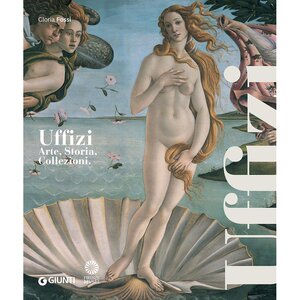Publisher: Giunti Editore
Series: Guides
Cover: Paperback
Pages: 64
Dimensions: cm 21.5 x 28.5
Publication date: 01/10/2015
ISBN: 9788809820463
Item weight: g 454
Language: Italian
GALLERIA DEGLI UFFIZI. I CAPOLAVORI
€10,00
The Uffizi Gallery of Florence is one of the most important museums in the world. The main core of its extremely rich collections includes works extending from the 13th to the 18th century; in particular, it is a faithful mirror of one of the most outstanding moments in art of all time: the Renaissance. Among the main artists represented are Giotto, Piero della Francesca, Paolo Uccello, Botticelli, Leonardo, Michelangelo, Raphael, Pontormo, Titian and Caravaggio.
| Weight | 454 g |
|---|---|
| Language | English, Italian, Japanese, Portuguese |
You may also like
-
UFFIZI. 100 CAPOLAVORI
€19,90 -
UFFIZI. GUIDA UFFICIALE
€16,00












